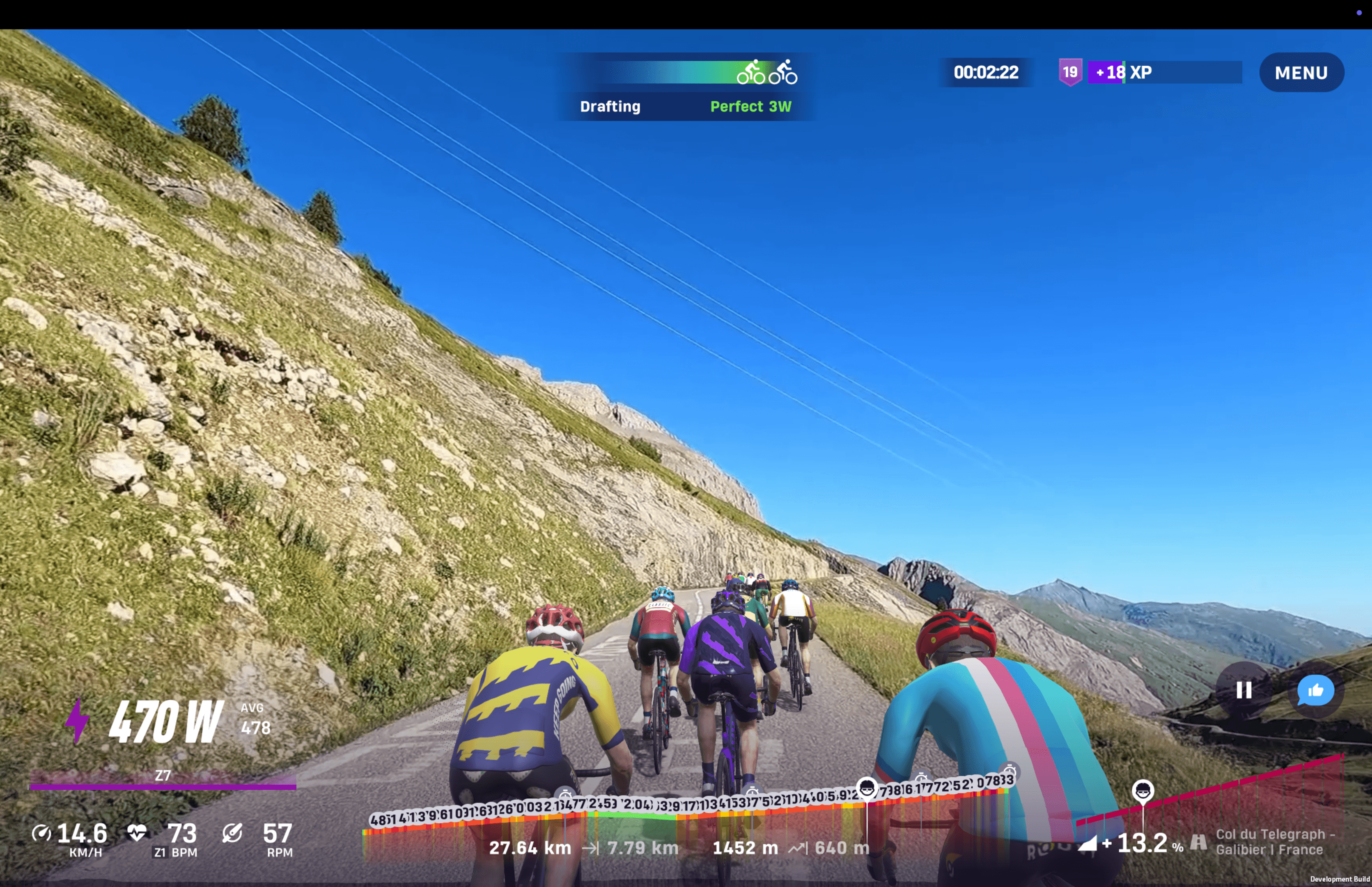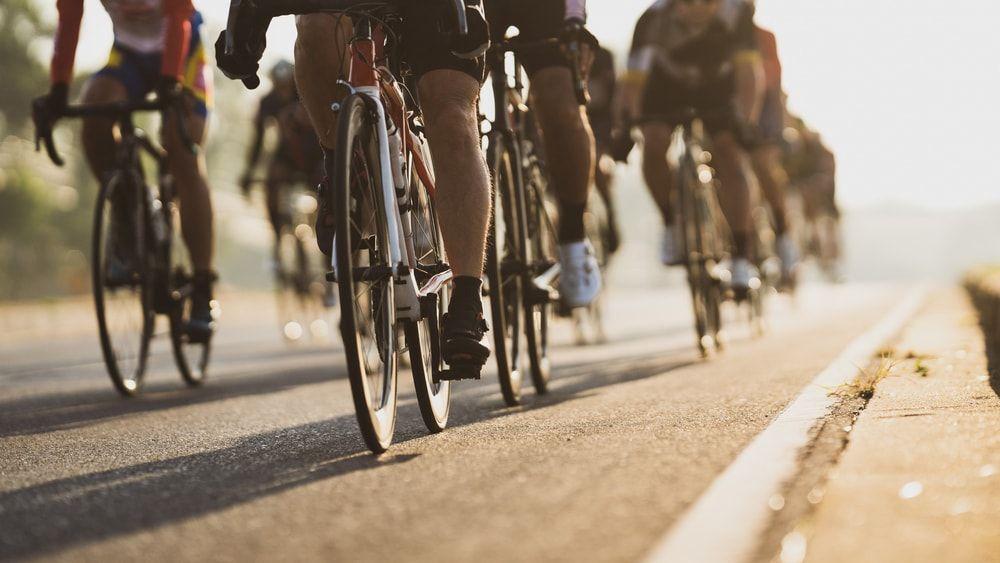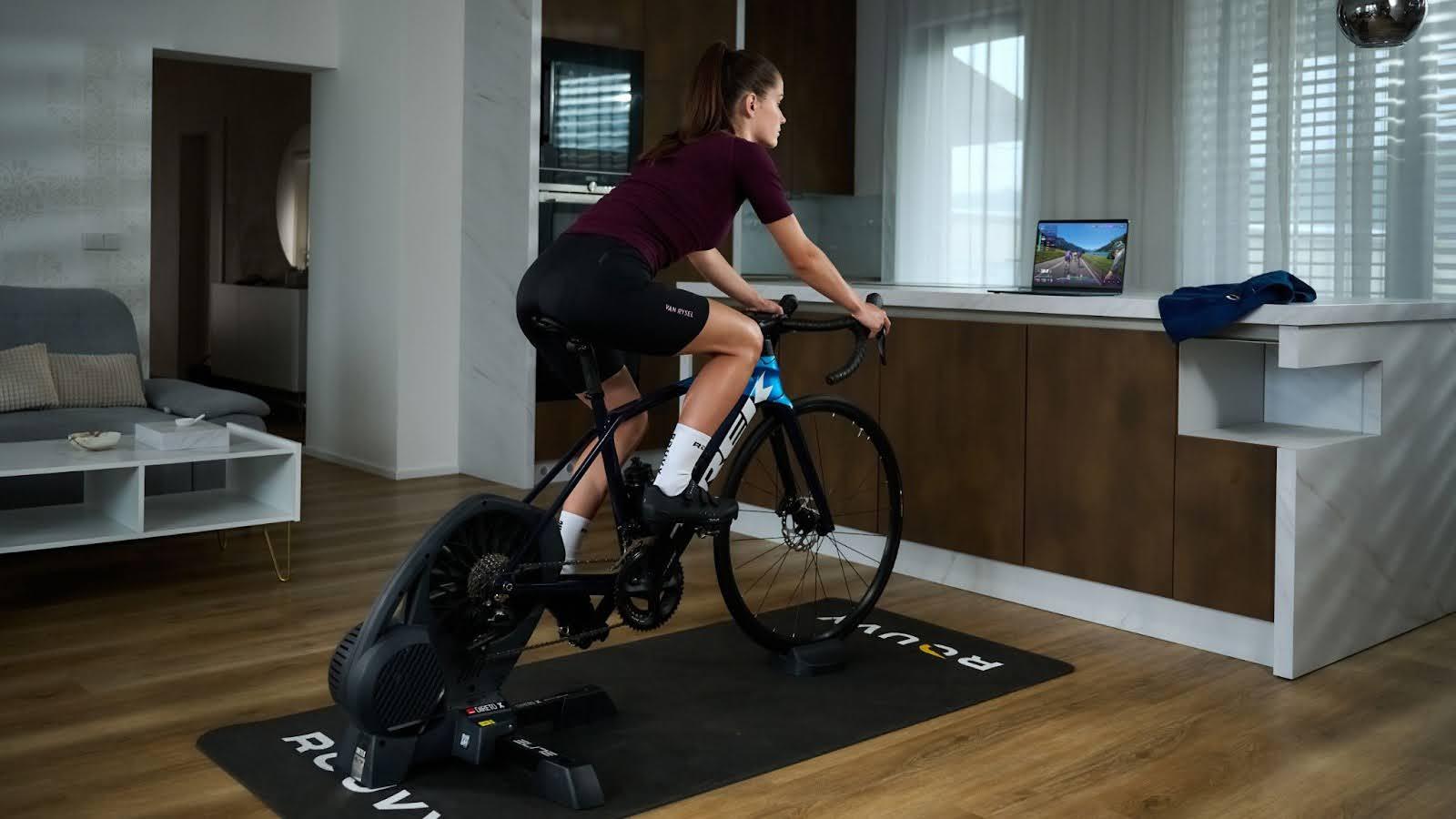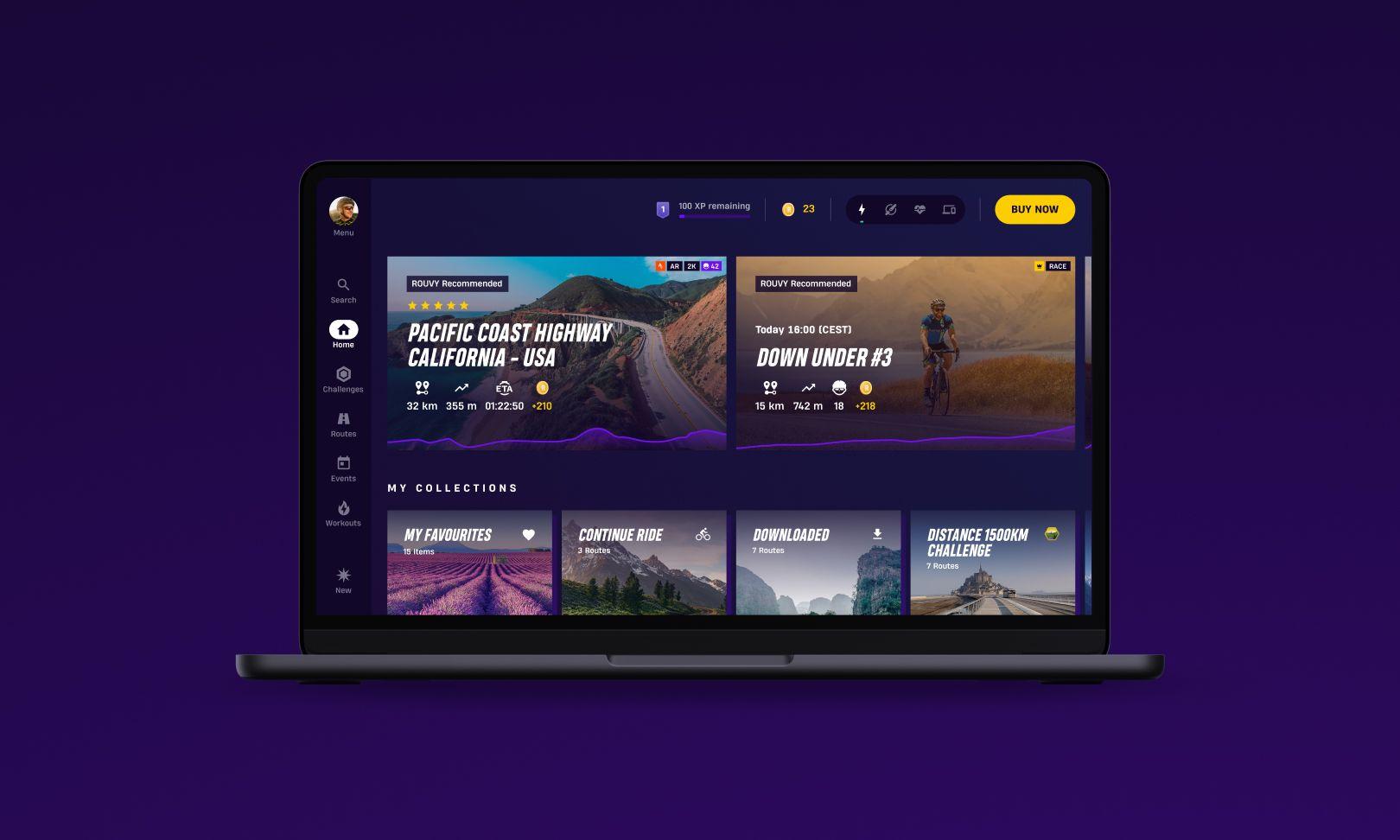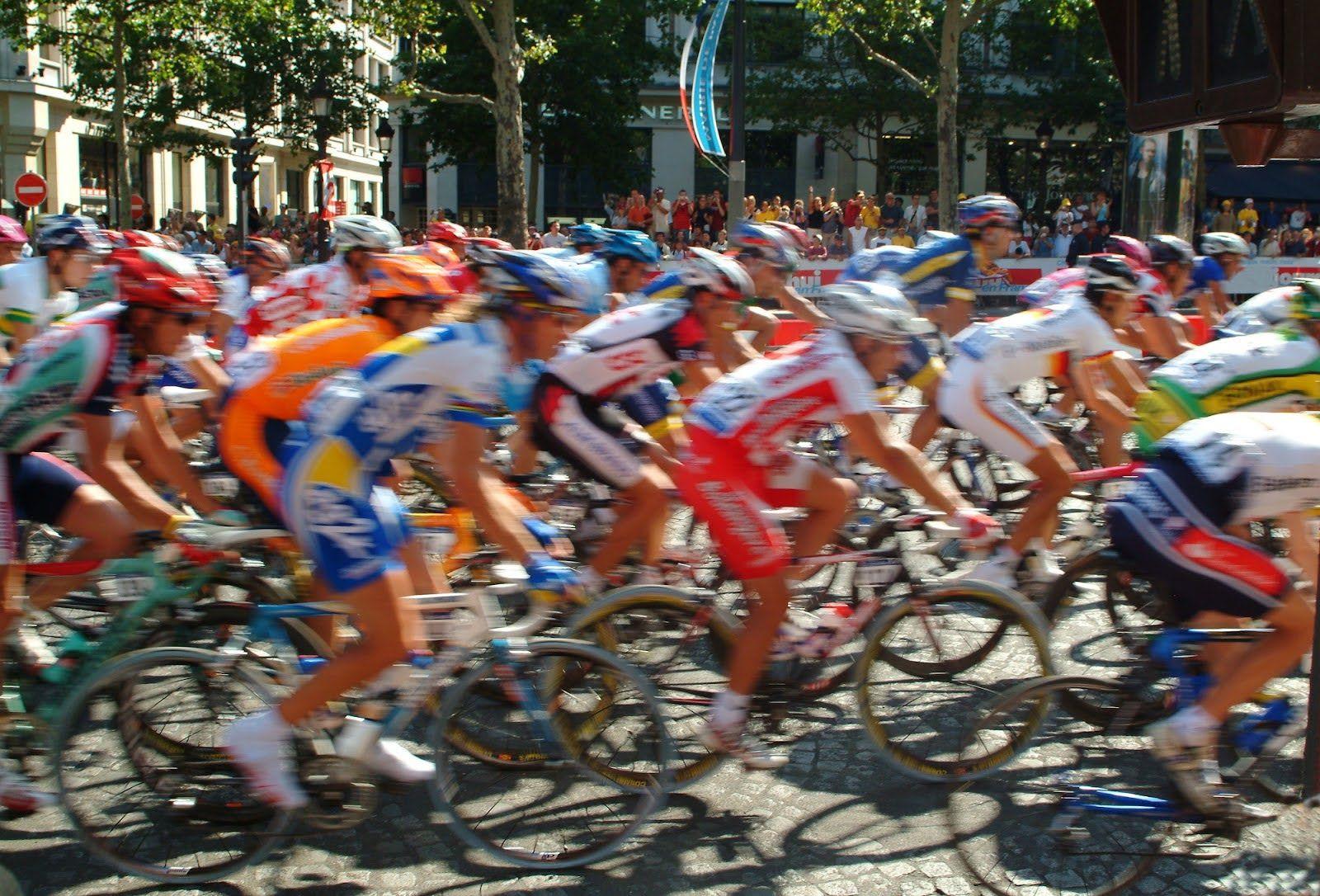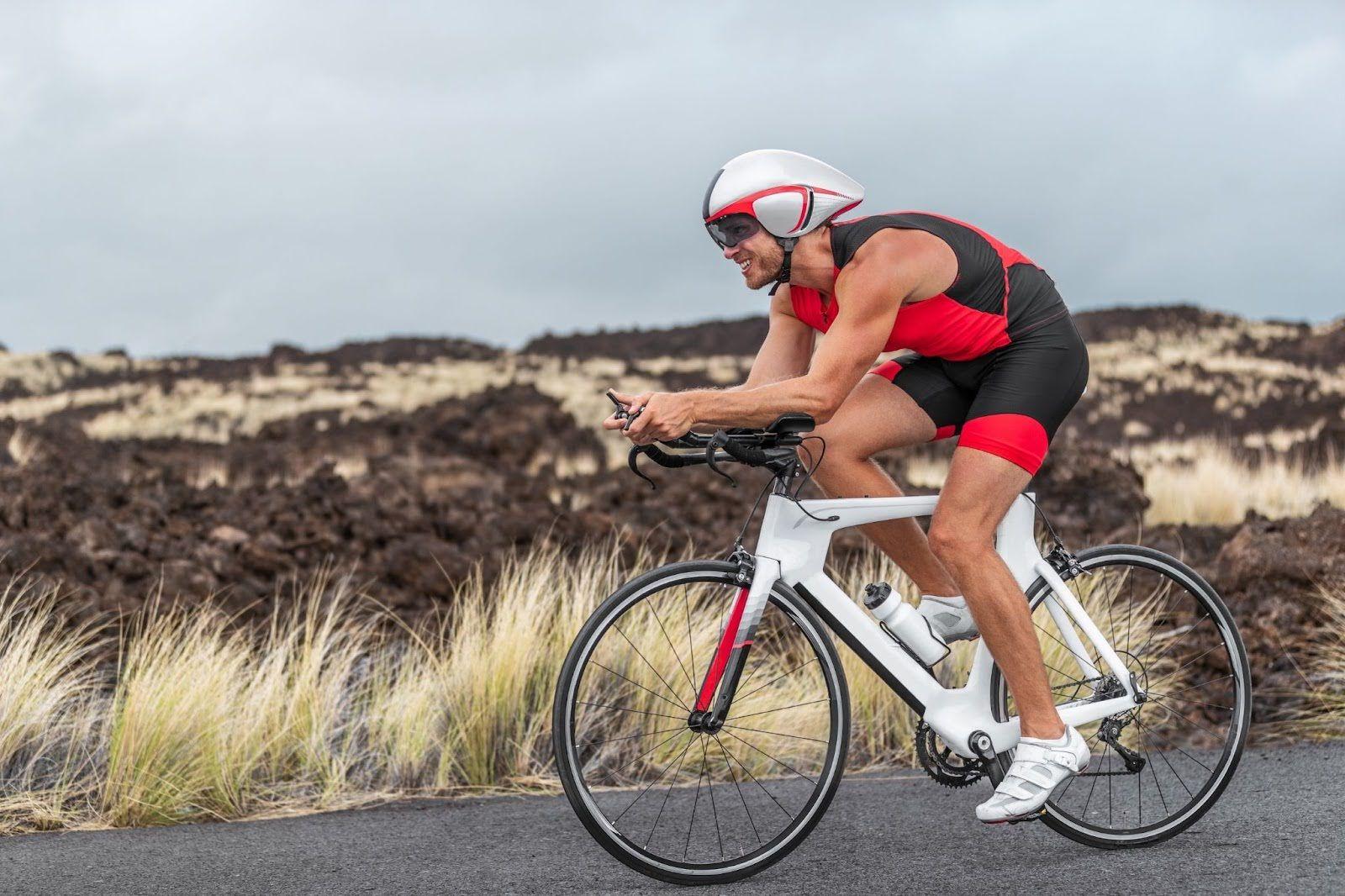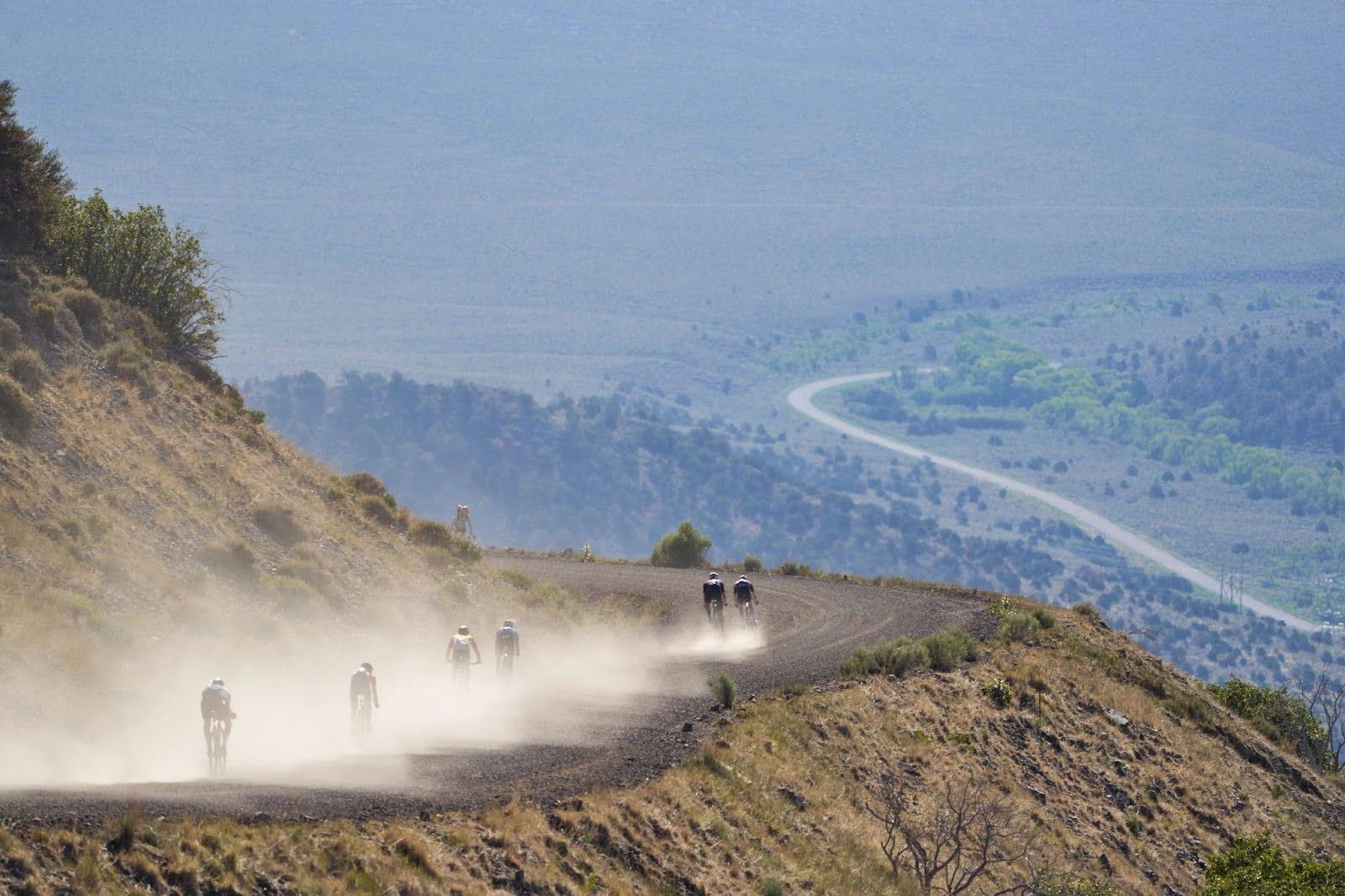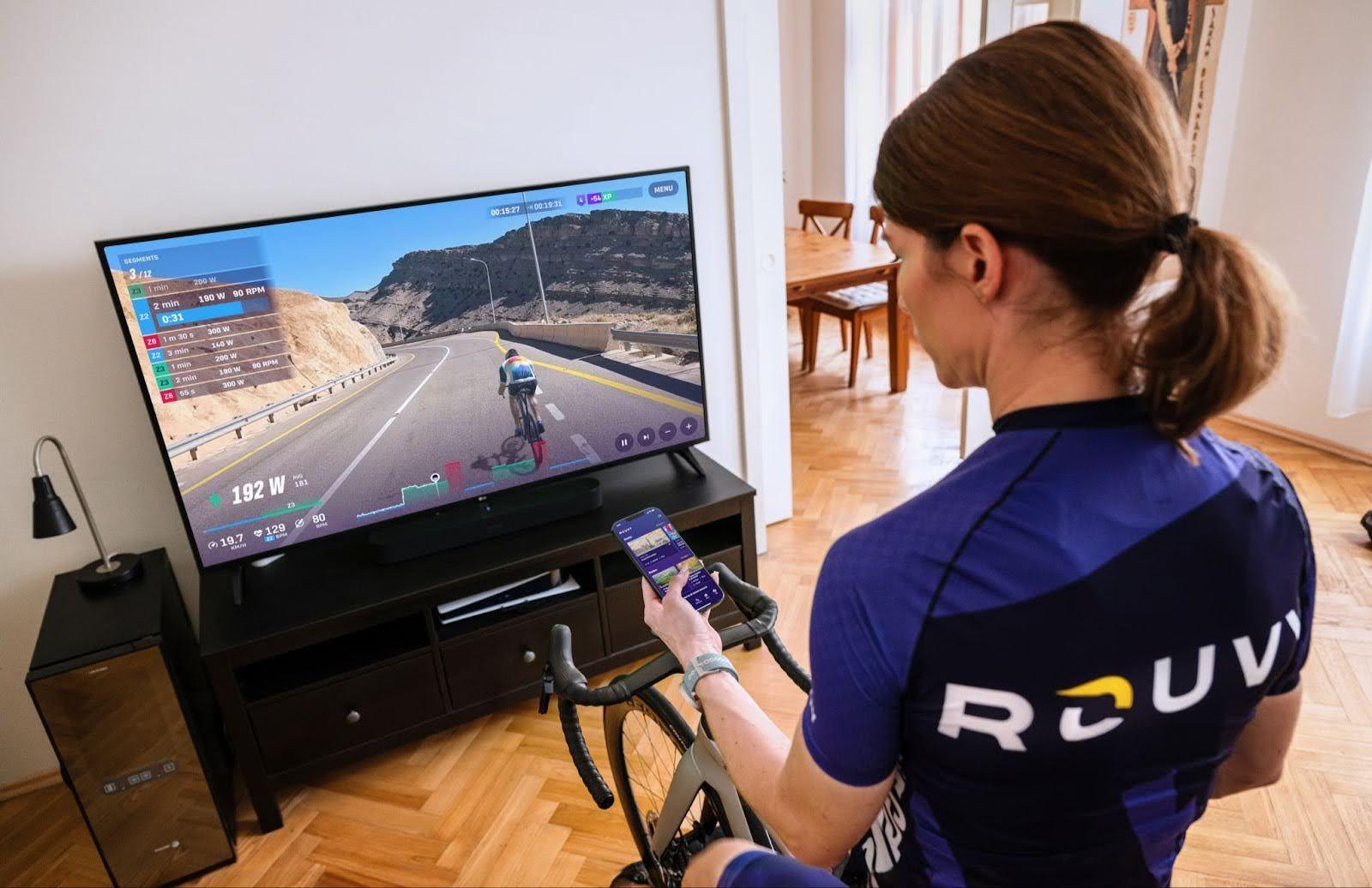We are all social animals (or at least most of us are). We enjoy the company of others and this is also true for cycling. But joining a cycling group ride - whether on the open road or on an indoor cycling app like ROUVY- might feel a little bit daunting at first. On a group ride, you’re responsible not just for yourself, but also for the rhythm and safety of everyone around you. Will I keep up with the group's pace? Will I push too hard? Don't worry, the good news is that with a little knowledge and practice, group rides can be one of the most fun and rewarding ways of continuing your cycling journey.
This guide will walk you through the skills, etiquette, and strategies to help you ride smarter and more confidently in any peloton - whether on real or virtual roads.
Why group rides matter - and what they teach you
Social Benefits and Training Gains
Cycling can be a solo sport if you prefer, but it doesn’t have to be. Group rides offer a social atmosphere that keeps motivation high. You laugh more, you learn faster, and you’ll likely push yourself harder than riding alone.
On the training side, riding in a group teaches:
- Pacing discipline (you can’t just surge and rest whenever you want)
- Drafting awareness, which translates to energy conservation
- Handling skills under real-world pressure
For competitive athletes, group rides simulate race-day pack dynamics, helping you sharpen your mental and physical reflexes. For recreational riders, they’re a gateway to stronger fitness and lifelong friendships.
Differences from solo cycling
When you’re riding solo, it’s your pace, your playlist, your stops. In a group? You’re syncing with other cyclists. That means adjusting speed, line, and effort to match the collective. It teaches patience and responsiveness - traits that will make you a better all-around cyclist.
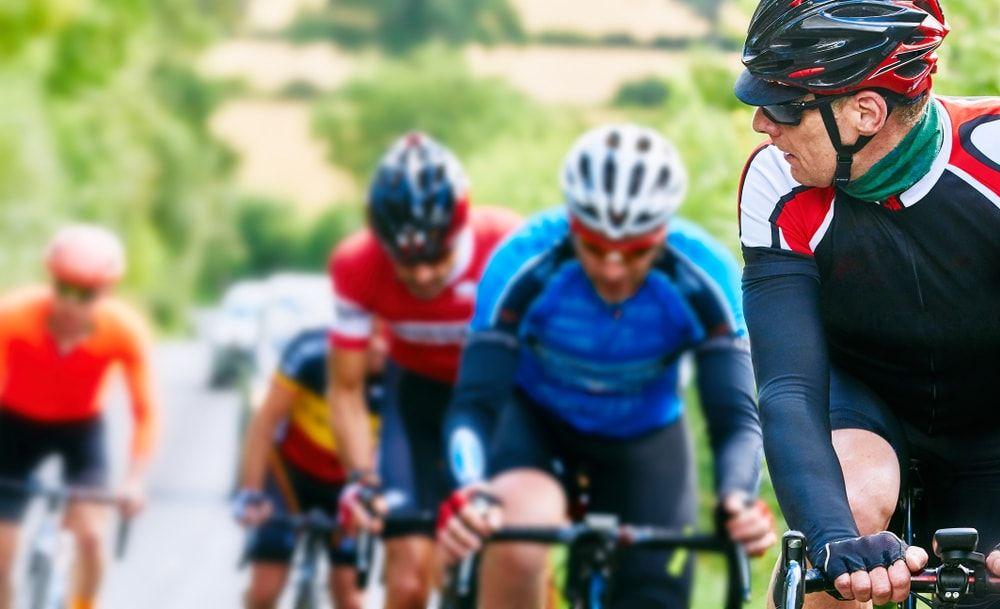
The psychology of riding in a group
Trust, awareness and shared flow
In group rides, you trade some independence for a feeling of shared movement. Trust becomes essential. You trust that others won’t brake unpredictably or swerve without warning - and in return, they trust you to do the same.
Riders often describe this experience as a kind of flow state, where you’re no longer riding as an individual but as part of a moving organism. It’s mentally engaging and deeply satisfying when everyone’s in sync.
How group dynamics impact pacing
The group sets the tempo - sometimes steady, sometimes surging. One rider’s attack or slowdown can affect the whole pack. That’s why understanding group dynamics is so valuable and creates a smoother experience. You learn to:
- Sense changes in pace before they happen
- Use drafting to recover without falling behind
- Communicate fatigue or warn of dangers without unnecessary drama
Group ride skills
Drafting and positioning
Drafting is fundamental. Riding closely behind another cyclist reduces your wind resistance significantly. This is key for endurance on longer rides. Ideally keep a distance of about half a bike width behind the rear wheel in front, but never overlap wheels - it's dangerous. If they move laterally and you’re overlapping, you risk contact and a crash. Practice staying in the draft without overcorrecting. Look past the rider in front to anticipate road changes.
ROUVY offers accurate drafting for avatars based on real-life physics. While riding, you’ll see a drafting icon and performance feedback when you’re positioned correctly in the pack.
Cornering and Braking Smoothly
Avoid sudden braking - it causes an accordion effect. Instead:
- Feather your brakes gently
- Communicate stops or slowdowns with hand signals or a verbal “slowing”
- Hold your line through corners
- Don’t lean aggressively or take wide, sweeping lines
On virtual rides, braking isn’t literal - but reducing your cadence or backing off power simulates the same effect. The app will automatically reduce your speed realistically for you through corners, depending on the radius of the corner - so for wide corners you are slowed down less as opposed to sharp corners.
Maintain a steady line
A steady line is golden:
- Keep your handlebars quiet - no weaving
- Don’t slow down suddenly, especially when standing
- Practice riding predictably. Ensure you feel comfortable and maintain a steady position relative to other riders, so they can trust your movement
In tight formations, especially in large groups, your line is part of the group’s stability.
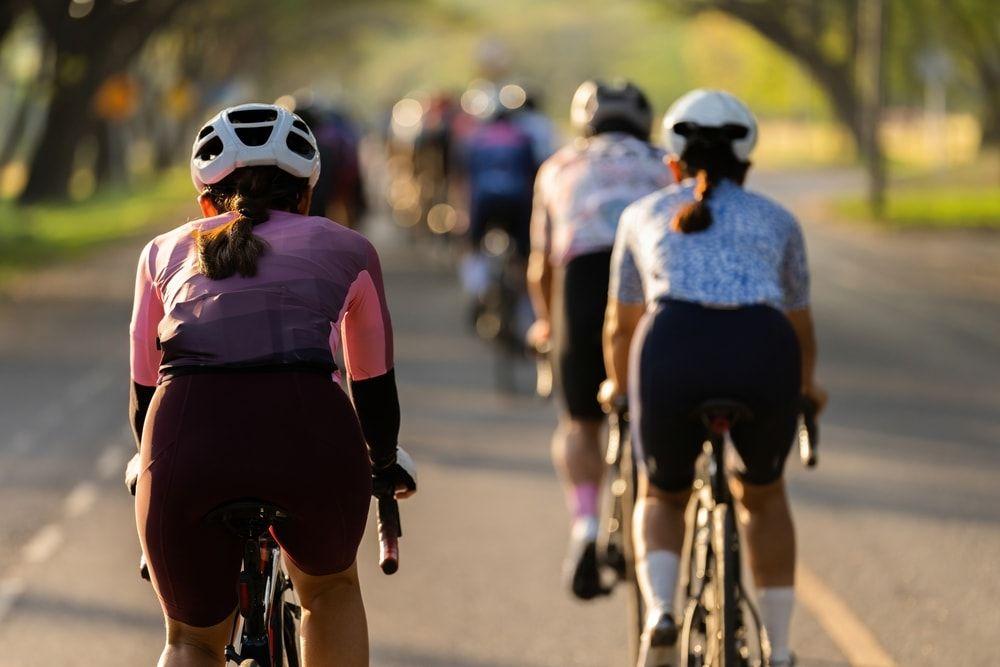
Group ride etiquette: Do’s and don’ts
Communication and hand signals
Outdoors, use standard hand signals:
- Point down for potholes or debris
- Flat hand behind back for slowing
- Wave or point for turns or stopping
Verbal cues like “on your left,” “car back,” or “slowing” keep the ride safe and relaxed.
On ROUVY, use Discord/voice channels for real-time comms with friends. A quick “ramping up pace” or “drop zone ahead” helps everyone stay connected. Riders should always try to remain behind the group leader.
When to pull, and when to rest
You don’t have to be on the front all the time. A paceline is like a machine and needs constant movement to work effectively:
- Take a 30–60 second pull at the front
- Signal and smoothly peel off
- Drift to the back and recover
If you’re struggling, it’s 100% okay to bail. Just rotate to the back of the group and hang in the draft.
What not to do in a paceline
Don’t make these rookie mistakes:
- Half-wheeling: riding just ahead of your partner, constantly increasing the pace
- Surging when pulling: set the pace, don’t increase it
- Staring at the wheel: look ahead to see the group movement
- Braking suddenly: feather brakes or ease your effort instead
These habits can cause splits, crashes or just grumpy teammates.
Types of group rides
No-Drop Rides
These are social rides where nobody gets dropped. They're great for learning etiquette and building base miles. They’re usually conversational paced and beginner friendly, so are ideal for new riders.
All official group rides on ROUVY are no-drop rides where the rubber band feature in the app acts like a magnet to keep the entire group together so no rider can drop too far behind.
Drop rides & pace lines
These are more competitive. You’re expected to hold pace, pull when needed and understand drafting dynamics. If you get dropped, the group might not wait.
Pace lines are usually single or double file, rotating like clockwork. Mastering this format is a rite of passage for many cyclists.
Virtual vs. outdoor group formats
Indoors, group rides are algorithm driven but the same strategies still apply. ROUVY replicates outdoor gradients and drafting physics so your pacing, positioning and pack dynamics still matter. Learn more about indoor cycling benefits.
The difference? You’re in full control of your environment - no bad weather, no traffic; just focus on your cycling.
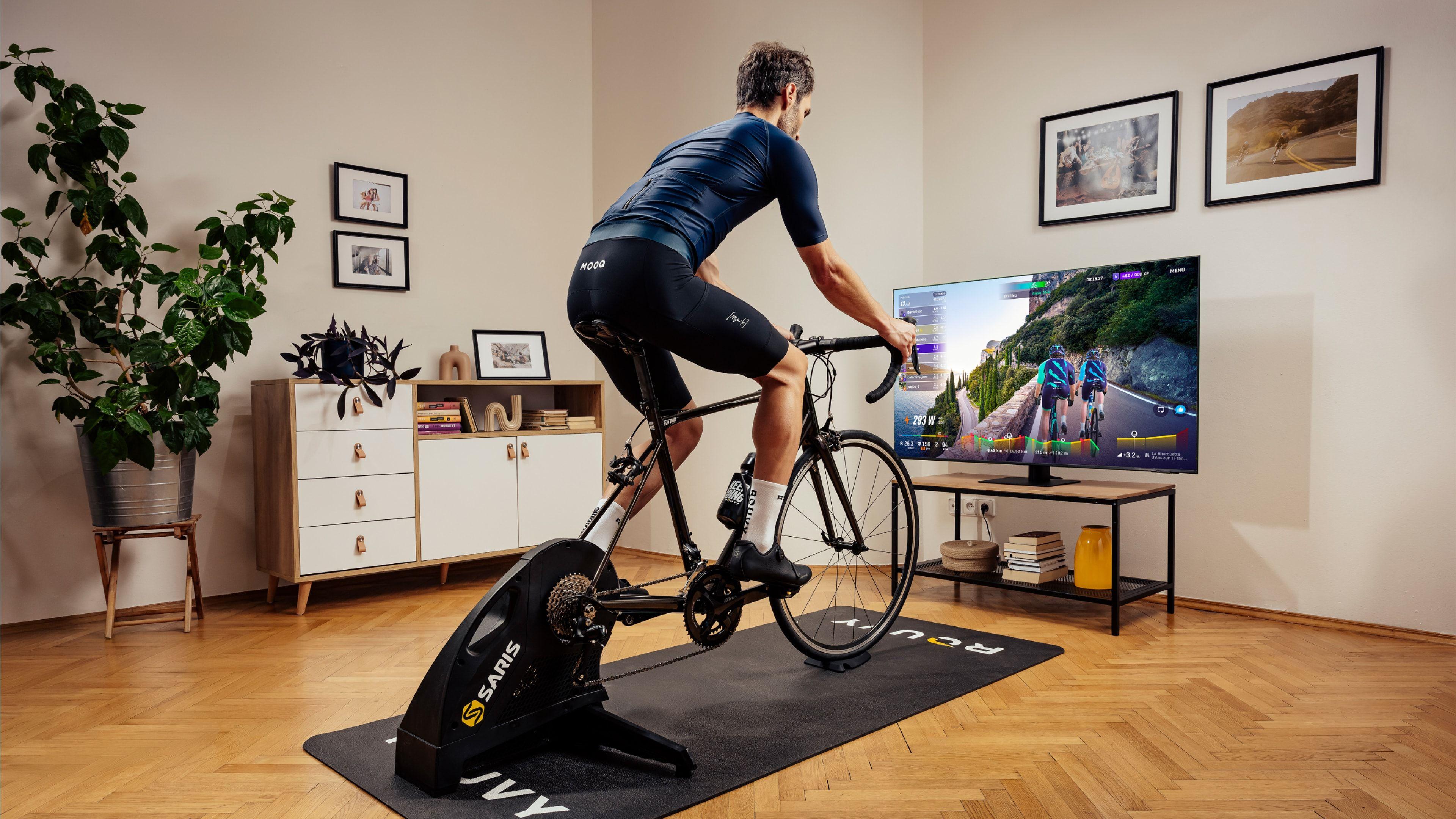
How to ride a group ride with ROUVY
ROUVY runs regular scheduled group rides (as well as many other kinds of events). You can also create your own and invite other riders and friends.
Official group rides usually announce the level of riders in the title of the ride e.g. 1,5-2,5 W/kg group ride. It requires a designated leader and when the group sets off, the elastic band algorithm is set automatically to keep the riders together.
You’ll see the avatars of other real time riders and your performance affects your virtual position. You'll find that smart pacing and smart riding, rather than speed, enhances your experience.
How drafting works virtually
When you draft on ROUVY:
- You use less power to maintain speed
- Your avatar tucks behind another, and your effort meter reflects the benefit
- drafting impact is increased behind several riders and at the optimum distance from the rider(s) ahead of you
Practicing virtual drafting builds skills that transfer outdoors.
Tips for virtual group riding
- Warm up early so you’re not chasing from the gun
- Monitor power and cadence zones - don’t go into the red too soon by riding too close to the front of the group
- Use all your gears for various changes in the gradient
Whether you’re training or social riding, ROUVY group rides give you a realistic, immersive experience that makes you stronger, smarter and more connected.
